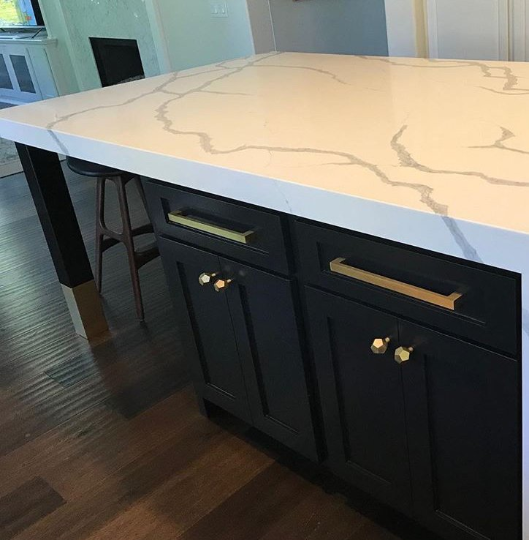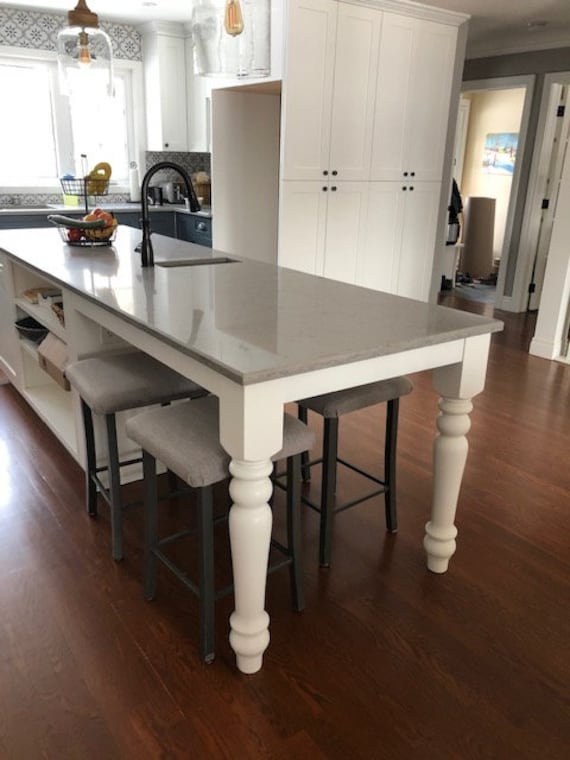A Guide to Selecting the Perfect Kitchen Area Island for Your Home
Recognizing your kitchen area's spatial characteristics is the initial step, making sure that the island fits effortlessly without disrupting the flow. The selection of finishes and materials additionally plays a crucial role in balancing the island with your cooking area's general style.
Assessing Your Area
Prior to picking a kitchen area island, it is crucial to thoroughly assess your area to make sure the enhancement will be both useful and aesthetically pleasing. Begin by measuring the available area, consisting of the size, size, and elevation of the kitchen. Precise dimensions are essential to stay clear of acquiring an island that bewilders the room or one that is disproportionately little.
Consider the existing layout and how the island will certainly incorporate with the present traffic flow. A well-placed island should not obstruct paths or hamper access to crucial devices, such as the cooktop, fridge, and sink. Leave sufficient clearance space-- commonly around 36 to 48 inches on all sides-- to enable comfy movement and workspace effectiveness.
Next, assess the all-natural light and sightlines within your kitchen area. An island that obstructs a window or interferes with visual communication can make the space really feel dark and confined. Believe regarding how the island's placement will certainly influence lights and exposure, guaranteeing it enhances as opposed to diminishes the cooking area's ambiance.
Determining the Function
Determining the purpose of your cooking area island is an important action in guaranteeing it meets your specific demands and preferences. Before diving right into layout or dimension considerations, it is vital to clarify what primary feature the island will offer in your kitchen. Will it be a main center for meal preparation, an informal dining area, or perhaps an additional storage space solution?
Additionally, ample counter space for mixing and cutting, along with obtainable storage space for cooking area devices and active ingredients, can change the island right into an efficient workstation. Conversely, if the island is meant to promote social communications or offer as a dining area, seating arrangements end up being vital.

Choosing the Right Size
Selecting the appropriate size for your kitchen island is an equilibrium of capability and space optimization. An ideal cooking area island need to give enough office while guaranteeing that activity around the kitchen area continues to be unblocked. Begin by determining your kitchen area area; a minimum clearance of 36 to 42 inches around the island is required to allow for comfy motion and access.
The measurements of the island must reflect its desired use. For circumstances, if the island will serve mostly as a prep location, a width of 24 to 36 inches could be sufficient. Nonetheless, if it is to fit seating, you should consider a bigger size, usually determining a minimum of 48 inches in width. Islands devoted to appliances or sinks might need added space to house these attributes effectively.

Finally, guarantee that the island's dimension enhances the total kitchen area layout, staying clear of any type of overwhelming presence that may detract from the cooking area's visual and energy - kitchen island legs. Cautious preparation and exact measurements will aid you accomplish a effective and harmonious cooking area setting
Picking Materials and Finishes
After identifying the ideal size for your cooking area island, the next action includes choosing appropriate materials and finishes. The selection of materials significantly affects both the aesthetic allure and functionality of your kitchen island. Popular materials for kitchen counters include quartz, butcher, and granite block, each offering distinct advantages. Granite, recognized for its sturdiness and classic elegance, is very immune to scratches and warmth. Quartz, an engineered stone, provides a non-porous surface area that resists bacteria and stains. Butcher block, made from wood, includes a cozy, rustic beauty and is perfect for food prep work.
Along with the kitchen counter, think about the products for browse this site the space station. Strong wood supplies a timeless, durable look, while stainless-steel gives a sleek, contemporary look and is very easy to clean. Repainted coatings can present a splash of color, with options ranging from muted pastels to bold, vivid shades.
Pay interest to the longevity of coatings, specifically in high-traffic locations, to preserve the island's appearance over time. Choosing the ideal products and finishes will boost both the performance and visual charm of your kitchen island.
Incorporating Functional Attributes
Integrating functional functions right into your kitchen island can dramatically improve its utility and benefit, changing it right into a versatile centerpiece of your cooking area. One essential attribute to consider is extra storage space. Incorporating cupboards, cabinets, and open shelving can provide much-needed space for pots and pans, utensils, and small home appliances, aiding to maintain a clutter-free setting.
Another useful enhancement is an integrated sink or cooktop, which can streamline dish prep work and clean-up procedures. A sink can facilitate tasks such as washing vegetables and cleansing recipes, while a cooktop can permit cooking straight on the island, cultivating a more social and interactive food preparation experience.
Take into consideration incorporating seating options, particularly if your kitchen functions as a casual eating location. Bar feceses or integrated benches can change the island right into a multifunctional area for dishes, research, or casual gatherings.
Lastly, integrating electric outlets into your kitchen island can enhance its functionality. Electrical outlets provide practical gain access to for little kitchen area devices, charging stations for digital gadgets, and extra lights alternatives.
Verdict

Before choosing a kitchen area island, it is essential to thoroughly evaluate your space to ensure the addition will certainly be both useful and cosmetically pleasing.Selecting the best size for your kitchen area island is an equilibrium of Click Here functionality and room optimization. kitchen island legs. A suitable cooking area island need to supply ample workspace while making certain that activity around the cooking area remains unobstructed.Integrating practical functions into your kitchen area island can substantially improve its utility and convenience, transforming it into a functional focal point of your kitchen area.In conclusion, choosing the perfect kitchen island demands a thorough assessment of the available room, clearness regarding its key feature, and careful consideration of the suitable dimension and products